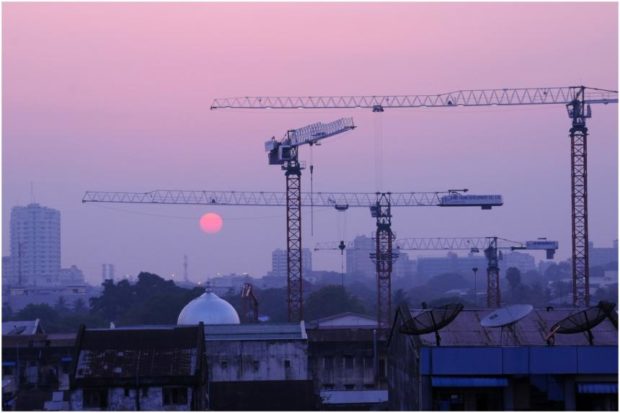
In its annual outlook, the ADB said GDP across Asia would settle at 5.2 percent this year and 5.3 percent next year. The Straits Times/Asia News Network
MANILA, Philippines – Growth in Asia will remain robust till next year, as most countries in the region ease into a post-pandemic recovery despite headwinds coming from the war in Ukraine, the Asian Development Bank (ADB) said on Wednesday (April 6).
In its annual outlook, the Manila-based ADB said gross domestic product (GDP) across Asia would settle at 5.2 percent this year and 5.3 percent next year after last year’s 6.9 percent.
“Increased immunity and the less severe health impacts of the Omicron variant are allowing economies to stay open and perform better than during previous outbreaks. This will support developing Asia’s continued return to normality,” ADB president Masatsugu Asakawa said in the report.
But there are “caveats”, he said.
Mr Asakawa said the Covid-19 pandemic “is by no means over”, and Russia’s invasion of Ukraine is rattling commodity markets.
Monetary tightening in the United States may also lead to global financial instability, he added.
ADB chief economist Albert Park told reporters: “Growth will remain uneven. South Asia will continue to grow strongly, growth will pick up in South-east Asia and the Pacific, normalize in East Asia and slow in the Caucasus and central Asia due to Ukraine.”
South-east Asia is set to grow by 4.9 percent this year, up from 2.9 percent last year, and by 5.2 percent next year, as it pivots towards “living with Covid-19” and opens up its borders even more.
Growth in South Asia will remain strong, though at a much slower clip than last year’s 8.3 percent, at 7 percent this year and 7.4 percent next year.
East Asia – which is seeing a flare-up of Omicron outbreaks – will experience a slowdown to 4.7 percent this year and 4.5 percent next year, from last year’s 7.6 percent.
“Clearly, things are highly uncertain right now… If the virus were to spread to many Chinese cities, and the government maintains a zero-Covid policy, it could be very disruptive to economic activity in China, which would emanate throughout the region,” said Mr Park.
He said it was “too early to say how that would happen and what China’s response would be if cases spread in a significant way. But it’s certainly a concerning factor and, if it gets out of hand, could lower growth in the coming year”.
There is also the ever-present threat of more lethal variants suddenly emerging.
The war in Ukraine, meanwhile, has been jacking up food and energy prices, though direct exposure is limited for much of Asia, except for the Caucasus and central Asia, which are heavily dependent on Russia, according to the report.
If the conflict drags on and escalates, though, it could prove to be a serious economic destabiliser for the region, the report said.
“Our current forecast in terms of the Russia-Ukraine conflict assumes that the war does not continue beyond the year, so that oil prices eventually moderate,” said Mr Park.
Mr Park said if the crippling sanctions imposed by the West prove effective at preventing Russia from selling its oil and gas, “then that clearly would lead to an even greater spike in oil prices”.
“(Prices) could go up quite substantially, and that would just add additional pressure on oil-importing countries in the region”.
That could lead to a cascade of inflationary pressures and supply disruptions.
Fiscal and monetary policies are still geared towards stimulating growth, he said, but the region may be on the cusp of a policy tightening cycle.
Growth started slowing in November last year on expectations that the United States Federal Reserve would raise rates and reduce asset purchases to rein in inflation.
For now, despite these uncertainties, “our forecast is that economic recovery will continue in Asia”, said Mr Park.
RELATED STORIES
War in Ukraine: Latest developments
ADB: Asia-Pacific bond yields rise amid war in Ukraine, US Fed rate hikes
ADB: PH output gap highest in Asean, inflicts deep labor wounds
Duterte economic team to discuss possible relief amid high oil prices